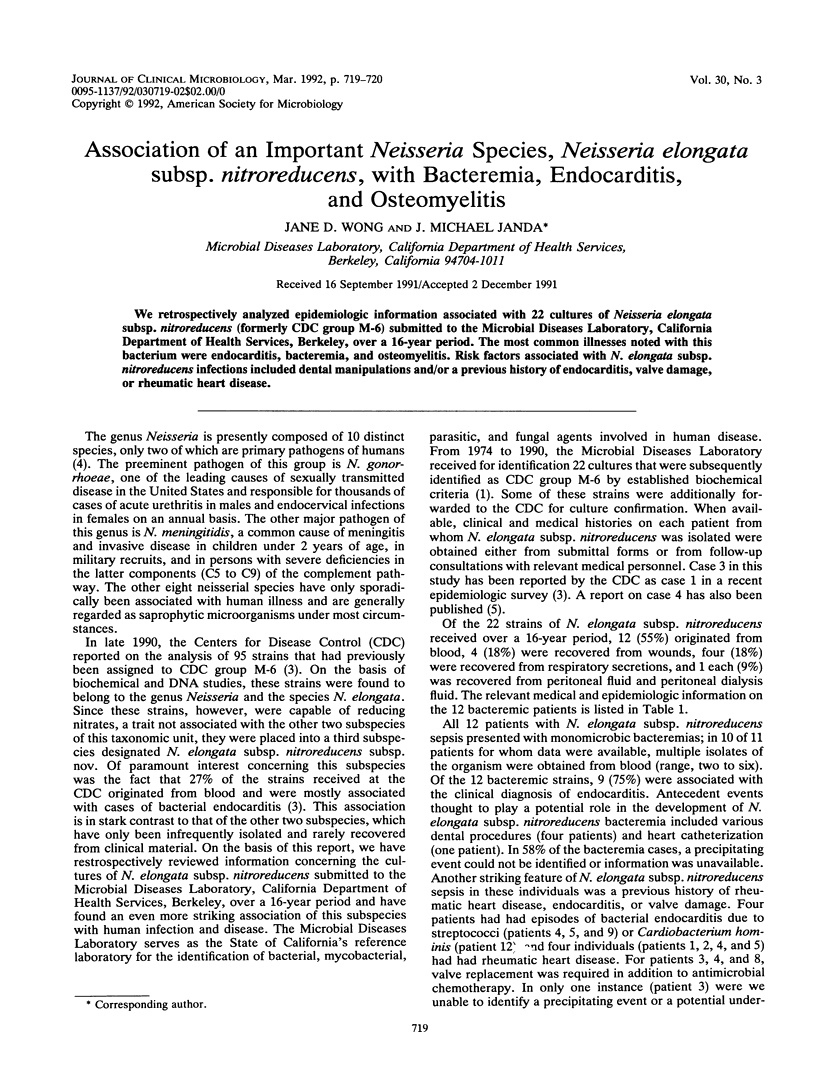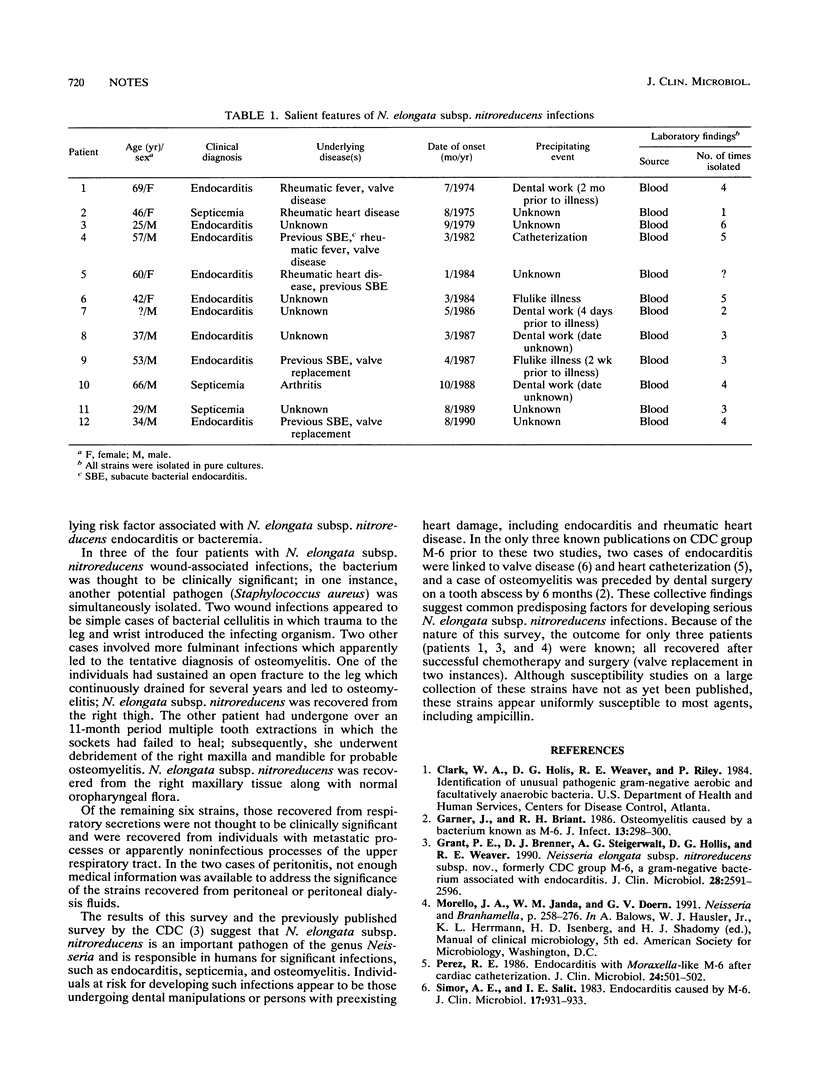Abstract
We retrospectively analyzed epidemiologic information associated with 22 cultures of Neisseria elongata subsp. nitroreducens (formerly CDC group M-6) submitted to the Microbial Diseases Laboratory, California Department of Health Services, Berkeley, over a 16-year period. The most common illnesses noted with this bacterium were endocarditis, bacteremia, and osteomyelitis. Risk factors associated with N. elongata subsp. nitroreducens infection included dental manipulations and/or a previous history of endocarditis, valve damage, or rheumatic heart disease.
Full text
PDF

Selected References
These references are in PubMed. This may not be the complete list of references from this article.
- Garner J., Briant R. H. Osteomyelitis caused by a bacterium known as M6. J Infect. 1986 Nov;13(3):298–300. doi: 10.1016/s0163-4453(86)91487-8. [DOI] [PubMed] [Google Scholar]
- Grant P. E., Brenner D. J., Steigerwalt A. G., Hollis D. G., Weaver R. E. Neisseria elongata subsp. nitroreducens subsp. nov., formerly CDC group M-6, a gram-negative bacterium associated with endocarditis. J Clin Microbiol. 1990 Dec;28(12):2591–2596. doi: 10.1128/jcm.28.12.2591-2596.1990. [DOI] [PMC free article] [PubMed] [Google Scholar]
- Perez R. E. Endocarditis with Moraxella-like M-6 after cardiac catheterization. J Clin Microbiol. 1986 Sep;24(3):501–502. doi: 10.1128/jcm.24.3.501-502.1986. [DOI] [PMC free article] [PubMed] [Google Scholar]
- Simor A. E., Salit I. E. Endocarditis caused by M6. J Clin Microbiol. 1983 May;17(5):931–933. doi: 10.1128/jcm.17.5.931-933.1983. [DOI] [PMC free article] [PubMed] [Google Scholar]


